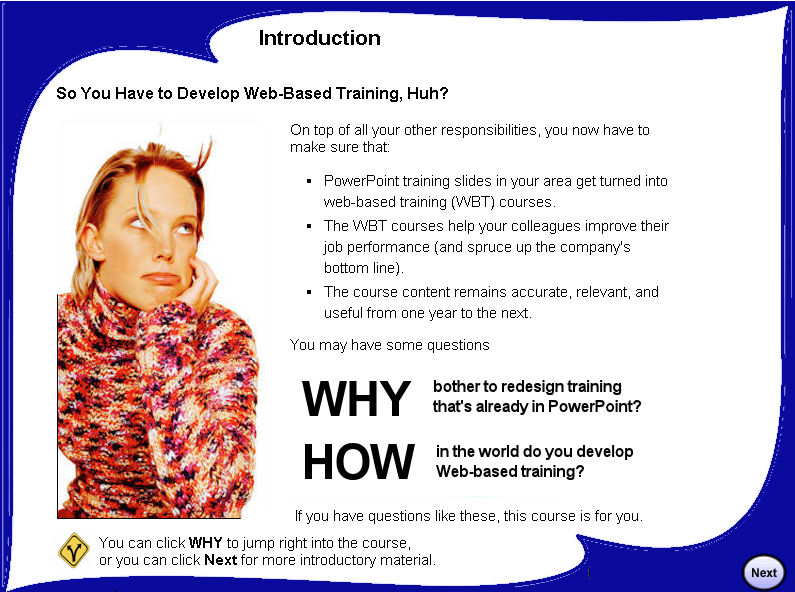Behold the Rapid e-Learning Machine!
Have you heard about the Amazing REM? The story goes like this:
Once upon a time, great minds in the kingdom invented an amazing Rapid e-Learning Machine. The kingdom’s instructional designers (IDs) collected a number of 25-slide, text-dense PowerPoint slide sets designed for instructor-led courses and used them to conduct awe-inspiring demonstration for the admiring populace.
“This is amazing!” the people cried excitedly. “They put those PowerPoint slides into the hopper, click a few keys, and presto! Out comes e-learning –a web-based training (WBT) course with lots of Click here interactivity!”
The IDs proudly presented their amazing Click to Continue WBTs and touted the economic benefits of rapid development. Unfortunately, the economic benefits came at a hefty learning cost that the kingdom’s bean counters hardly noticed.
What’s the Problem?
If you’re the instructional designer in charge of an amazing REM, you understand the difficulties. Automatically-produced WBTs are typically heavy on web-based clicking and relatively light on learner-focused training.
But there are ways to heat up automatically-generated web-based training courses. The first area to tackle? course objectives.
Make the course objectives JOB performance-centric.
Here’s a typical “Course Objectives” page as it was originally output from the REM, based on an input PowerPoint slide. The objectives listed are indeed based on learner outcomes, but not on outcomes related to job performance.
They specify that the learner be able to:
- Describe steps
- Describe responsibilities
- Describe principles
- Print quick Reference Guides
In the first objective, why should the learner be able to describe the steps involved in WBT development? Not because of job responsibilities that include step description, but because the assessment for this course required step description.
These objectives are based more on course assessment performance than on job performance, and they don’t lead potential learners toward improving job-related skills.
Make Course Objectives Motivational.
A learner with very little skin in the game tends to have just about that much interest in the learning. So why not make the stakes a little more meaningful by tying course objectives directly to job responsibilities?
This example (on the left) re-frames the content-based objectives shown earlier. When you click the image to review the re-presentation, be sure to notice:
- The altered point of view/perspective
- The performance, rather than knowledge, focus
- The learner-directed progression from objectives to course content (jump directly into the content or review more detail about the objectives).
How do you spice up your course objectives?
This is part of an ongoing series about adding a little spice and a lot of job relevance to WBT courses produced from PowerPoint slide decks via rapid e-learning procedures. Share your ideas for coping with REMs.


